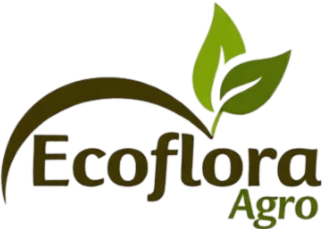As the agriculture sector grapples with the triple challenge of environmental degradation, food security, and climate resilience, the agrochemical industry is being forced to evolve. Traditional pesticide and fertilizer models—built on heavy chemical inputs—are now being scrutinized for their long-term harm to ecosystems and human health. In this evolving landscape, Ecoflora has emerged as a standout example of how sustainability can be woven into the very fabric of agrochemical development.
This article presents a deep dive into Ecoflora’s sustainable approach to agrochemical innovation, highlighting its product philosophy, R&D practices, ecological benefits, and market impact.
The Shift Towards Sustainable Agrochemicals
Agrochemicals are essential for crop productivity, but conventional formulations often come with severe drawbacks:
- Soil and water contamination
- Pesticide resistance in pests
- Bioaccumulation in the food chain
- Health risks for farmers and consumers
Sustainable agrochemicals aim to address these concerns by minimizing toxicity, promoting biodegradability, and integrating with natural farming systems.
Ecoflora’s Vision: Sustainability from Source to Spray
Ecoflora, a bio-innovative company based in Latin America and expanding across Asia and Africa, specializes in botanical-based agrochemicals. Its commitment to green chemistry and circular economy principles places it at the forefront of sustainable agricultural transformation.
Key Sustainability Pillars of Ecoflora:
- Plant-Derived Ingredients
Ecoflora formulates its products using active compounds from plants like neem, garlic, and pyrethrum, ensuring a natural origin with reduced synthetic residues. - Low Environmental Footprint
Its production processes emphasize energy efficiency, water recycling, and carbon neutrality. - Biodegradability and Safety
The company’s products are designed to degrade rapidly in the environment, leaving no harmful residues in soil or crops. - Farmer and Community Engagement
Through fair sourcing, training programs, and local partnerships, Ecoflora supports smallholder farmers and indigenous suppliers.
The Ecoflora Model: An End-to-End Sustainable Development Cycle
| Stage | Ecoflora’s Sustainable Approach |
|---|---|
| Raw Material Sourcing | Harvests from certified organic or wild-crafted zones, involving local communities |
| Research & Formulation | Uses green chemistry principles and avoids persistent or synthetic additives |
| Manufacturing | Low-emission processes, solar-powered units, and minimal water waste |
| Distribution | Eco-friendly packaging and regional warehousing to cut transport emissions |
| Application & Disposal | Encourages residue-free practices and provides guidance on safe disposal |
Green Chemistry in Action: R&D at Ecoflora
Ecoflora’s research lab combines ethnobotanical wisdom with modern biochemical analysis. This unique hybrid approach leads to the development of:
- Biopesticides with multiple pest-targeting mechanisms
- Biofungicides based on essential oils and organic acids
- Growth stimulants from seaweed, moringa, and plant hormones
By reducing reliance on petroleum-derived chemicals, Ecoflora is helping to reshape the agrochemical R&D paradigm.
Case Study: Neem-Based Biopesticide by Ecoflora
Ecoflora’s flagship neem-based biopesticide, branded under the name EcoNeemX, showcases its sustainable design:
| Feature | Details |
|---|---|
| Active Ingredient | Azadirachtin, a natural compound from neem seed kernels |
| Mode of Action | Disrupts insect molting and feeding behaviors |
| Environmental Residue | Breaks down within 3–5 days |
| Toxicity Profile | Non-toxic to bees, birds, and aquatic life |
| Adoption Rate | Over 500,000 hectares treated with zero MRL violations in the last 3 years |
This product has enabled both organic and conventional farmers to meet strict export requirements while protecting the environment.
Industry Impact and Future Potential
Ecoflora’s model presents a blueprint for other agrochemical companies aiming to go green. It proves that sustainability does not have to compromise efficacy or profitability.
Broader Impacts:
- Export Market Access: Helps farmers meet European and US residue standards.
- Climate Adaptation: Supports pest management in shifting climate zones.
- Healthier Ecosystems: Minimizes runoff, protects pollinators, and restores soil biology.
- Regulatory Recognition: Gaining approvals under international organic and green product standards.
Comparative Snapshot: Traditional vs. Ecoflora’s Sustainable Agrochemicals
| Attribute | Traditional Agrochemicals | Ecoflora’s Botanical Solutions |
|---|---|---|
| Source | Synthetic chemicals | Plant-based extracts |
| Residue Risk | High and persistent | Low and biodegradable |
| Production Impact | High energy and pollution | Low-carbon, water-conscious |
| Toxicity | Often harmful to non-targets | Selective and pollinator-safe |
| Regulatory Burden | Increasing restrictions globally | Certified organic-compatible |
| Farmer Health Risk | High risk | Minimal to none |
Overview Table: Ecoflora’s Sustainable Edge
| Area | Description |
|---|---|
| Core Philosophy | Nature-inspired, science-driven sustainability |
| Main Products | Biopesticides, biofungicides, growth boosters |
| Key Ingredients | Neem, garlic, pyrethrum, seaweed, moringa |
| R&D Strategy | Combines traditional plant knowledge with modern bioanalysis |
| Market Focus | Organic and residue-sensitive export farming |
| Community Engagement | Sourcing partnerships, farmer training, local processing |
Three One-Line FAQs
Q: What makes Ecoflora’s agrochemicals sustainable?
They’re made from plant-based, biodegradable ingredients with minimal environmental impact.
Q: Are botanical solutions effective for large-scale farming?
Yes, Ecoflora’s products are scalable and already used on thousands of hectares globally.
Q: Do Ecoflora products meet organic certification standards?
Absolutely—they comply with international organic farming regulations and residue limits.
